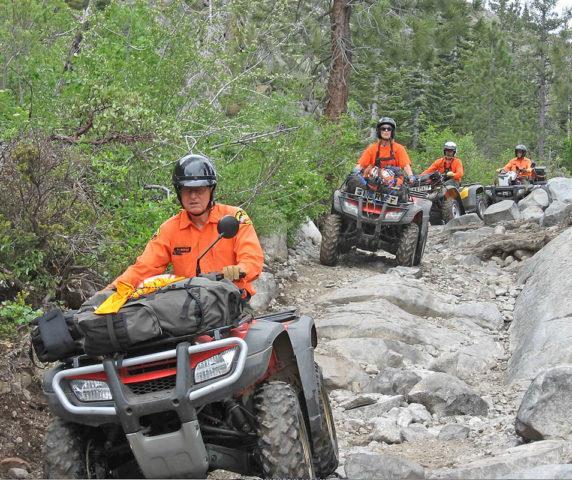
How Electric ATVs Are Revolutionizing Transportation and Tourism in Costa Rica
Costa Rica is on a fast track transition to renewable energy.In fact, the little country wants to be the first in the Americas to leave fossil fuel in the past where it belongs.
As part of his inaugural promise in 2019, President Carlos Alvarado announced his 10-part strategy to turn the country 100% fossil-fuel-free by 2050.
'Costa Rica knows that decarbonization is the great task of our generation, and we want to be the first country in the world to achieve it. We are putting decarbonization at the heart of our national development, public investment, and long-term strategic plan,' said Alvarado.
As the nation forges ahead to keep its promise through the formation of green tax reforms, import incentives, and foreign direct investment initiatives, a new option in electric vehicle technology is taking the stage.

The Electric Vehicle Revolution
Electric ATVs have entered the market and are replacing the pollution and noise generating versions that dominated off-road technology until recently. O wning an E- ATV has also become as economically viable as buying a traditional gas-powered option thanks to the significant zero-tax-under-$30,000 incentive for electric vehicle imports.
New property emphasizes vehicle versatility as manufacturers responds to customer needs. Vehicle options include 2WD models for everyday use—a common form of transportation in most CR beach towns—in addition to 4WD powerhouses made to dominate mountains and off-road terrain.
E-ATVs currently on the market in Costa Rica is manufactured in the U.S. using advanced technology that has been tested and refined for over two decades.
What you need to know
It is natural for the public to be speculative of technological newcomers. Do the vehicle's benefits outweigh its downsides or the possibility of a high price tag? Fortunately, yes. With E-ATVs, there prove to be few downsides to choosing Green over a traditional gas-powered model.
The following points compare the pros and cons of E-ATVs to the old-school gas versions.
Most E-ATVs use lithium-ion batteries and don't have heavy transmission systems to deliver power, making them lighter, which significant plus for the vehicle's longevity and savings on overall maintenance.
- Noise : Standard gas-powered ATVsare loud and can register over 100 decibels ( legal Limit in Costa Rica is now around 90 decibels). The more powerful the engine, the louder it tends to be. E-ATVs, on the other hand, have nearly 1,000 fewer moving parts and are considerably quieter. Only the sound of the tires on the trail and a faint electric noise is audible.
In Costa Rica, driving a traditional ATV near a national park or conservation area is a sure guarantee NOT TOSEE any wild animals – or tame ones for that matter. Green ATVs open up a whole new sector in eco-tourism that combines the thrill of off-roading with the opportunity to spot birds and wildlife.
- Search and Rescue, park patrols, and police monitoring: Current models available in Costa Rica were designed with emergency responders, search and rescue personnel, ecologists, and environmentalists in mind. Their size, maneuverability, and power are ideal for park rangers, first responders, wildland firefighters, and rural police forces. A silent motor means rescue personnel can hear a cry for help. It also facilitates scouting without giving away the police or ranger's whereabouts.
- Maintenance: For buyers shopping the market, the cost of maintenance and parts availability should be kept in mind.
Gas ATV engines have multiple moving parts, all of which need a fair amount of maint enhanced replacement to keep the motor running efficiently.
E-ATV motors are much simpler and have some 1,000 fewer parts overall (in sensors, cooling, engine, gasoline, etc.). In the long run, maintenance for E-ATVs isconsiderably less than the alternative (given that replacement parts are locally available and reasonably priced).
- Environmental Concerns: According to E-ATV manufacturer, DRR, standard ATVs can release more than 20 pounds of CO2 into the atmosphere from a single tank of gas. Multiply that by a 10-year average vehicle lifespan and the impact is ugly.
Another report by researcher ELSEVIER claims that 'Off-road recreation vehicles are an important source of emissions and make a disproportionately high contribution to the emissions inventory.'
The International Council on Clean Transportation provides research regarding greenhouse gas emissions from the manufacturing of lithium-ion batteries for electric vehicles. Their research shows that electric technology is better for the environment . Vehicles emit fewer greenhouse gases and air pollutants over their life than gas or diesel-run models – even after the production and the generation of the electricity required to fuel them is considered.

- Gas vs. batteries: Owning a traditional gas-powered ATV requires filling the tank regularly. In rural Costa Rica's beach and agricultural towns, ATVs are one of the primary sources of transportation, and the cost of gas and maintenance can reach several hundred if not thousands of dollars per year.
E-ATVs receive their power from electricity. All that is needed is an electrical outlet and the time necessary to recharge the battery. The cost of charging the electrical 'tank' (battery) is pennies when compared to the price of petrol and much more convenient than driving to a gas station or transporting canisters of fuel to remote locations where the ATVs areoperating.
Fully charging an 8kWh lithium-ion 'tank' costs approximately $1.28, according to 2019 prices in Costa Rica !
- Battery life: Most E-ATV batteries have an average operation range between 40km and 160km on a single charge, depending on the model. This translates to approximately 2 to 6 hours of charging time for battery life. Nonetheless, regardless of the savings, some owners prefer the ease of filling a tank over waiting two to six hours for a battery to charge.
On the contrary, it's unlikely for an ATV driver to consume a full battery loadon a good day.On average, ATVs are only used about 11km/7miles per day.
The electric vehicle industry is continuously improving lithium-ion battery technology, size, life, and load. Batteries today are smaller and lighter than just five years ago. E-ATV chargers are getting smaller too (size of an Xbox) and can be carried, much like a cell phone charger.
For companies using quads for tours or tourist rentals , replaceable batteries are the solution to ensure vehicles are always fully charged and ready for action. Many companies sell replacements that are small and versatile enough to be carried on the quad and switched out quickly if needed. The cost of buying back-up replacement batteries is justifiable and ensures the quad isn't weighed down unnecessarily by larger extended-distance batteries.
At the end of the day, we all want to do our part in protecting the environment when purchasing a new vehicle. E-ATVs do no produce toxic gases or noise pollution and are far more practical than buying a traditional quad or 4WD SUV to navigate off-road terrain. Thanks to Costa Rica's green incentives, these vehicles are available for sale now , and their price rivals the gas-powered alternatives.

Resonance has been created to bring together a community of digital nomads, entrepreneurs, innovators, wisdom keepers, alternative thinkers, mentors and light leaders from all over the planet to bridge the gap between demanding work and living a lifestyle that offers the opportunity to live and work in an environment that is nourishing and supportive.

Legal Disclaimer:
MENAFN provides the
information “as is” without warranty of any kind. We do not accept
any responsibility or liability for the accuracy, content, images,
videos, licenses, completeness, legality, or reliability of the information
contained in this article. If you have any complaints or copyright
issues related to this article, kindly contact the provider above.
















Comments
No comment